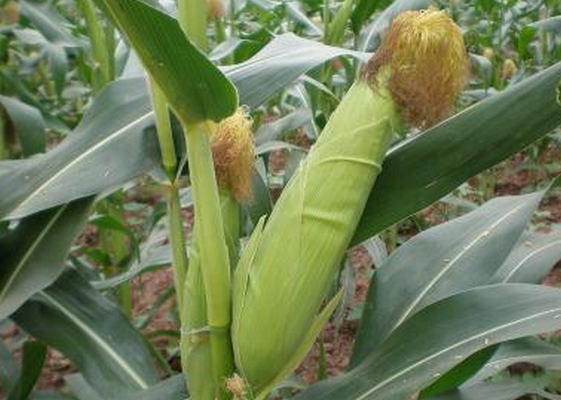Selection and arrangement of plots: Choose fertile and moist plots, sunny and ventilated, with an area of ​​more than 1 mu. The depth of land ploughing should not be less than 18 cm, and the area of ​​chernoze should be above 22 cm. The principle of fertilization is based on base fertilizer, supplemented by topdressing, organic fertilizer, supplemented by inorganic fertilizer. Before the plough, apply high-quality piles per acre, 1000-2000 kg of manure and 20-30 kg of phosphate fertilizer. Plant spacing: corn row spacing 115-130 cm or corn double row spacing is 160 cm, plant spacing 40-50 cm. Forage seedlings are planted between two rows of corn, 80-90 cm wide, spread, and generally require east-west directions. Seed requirements. The purity of forage seeds should not be less than 90%, and the seed germination rate should not be lower than 70%. Maize seeds can be selected from hybrid corn varieties or local fine varieties. Forage planting: 1. Sowing: Spring sowing from mid-March to early May, too late to be susceptible to drought and heat, weeds; autumn sowing from September to mid-October, too late to affect the next year's output. The first planting of red clover soil should be inoculated with Rhizopus erythraea by extracting the root nodules from the roots of healthy and disease-free red clover plants and mixing them with seeds to sow them. Plant 0.5-0.75 kg per mu of intercropping, mix it with the same amount of fine soil and spread it in the broadcast, 1-2 cm deep. After sowing, use bamboo sticks to sweep in the direction of the broadcast several times. 2. Field management: When the third branch of the forage seedlings is out, 5 kg of fertilizer is applied to each mu. In the seedling stage and the next year, when the greening is carried out, the cultivating and weeding are carried out; when the next year is returned to the green and after each harvest, 600 kg of human and animal excrement are applied per acre. When the grass layer is 40-50 cm high, the grass is harvested. In the late July, the buds are harvested or not. The autumn sowing grass is not harvested in the same year, and harvesting begins in the second half of next year. After the pasture is planted once, it is exchanged with the corn line every 4-5 years. Corn cultivation: 1000-2000 kg of base fertilizer per acre, 20 kg of phosphate fertilizer, 2 strains per litter, can be mixed with cowpea. After emergence, it is necessary to check the seedlings in time, and the lack of seedlings should be germinated to replant or seedling transplanting. Usually in the 3-4 leaf period seedlings. Remove too dense and sick weak seedlings. The seedling height is 8-10 cm and each is cultivated once before heading and a fertilizer is applied. The amount of fertilizer applied is 30% more than that of the non-intercropped land. In the male flowering stage and the female silking stage, artificially assisted pollination can be used to increase corn yield, that is, at 8:00 am (dew is dry) to 11 o'clock, the collected pollen is removed from the female filament. When the corn is planted the next year, only the plow corn can be used. Dietary supplement Fufeng Sinuote Biotechnology Co.,Ltd. , https://www.sinuotebio.com
Red clover pasture and corn intercropping